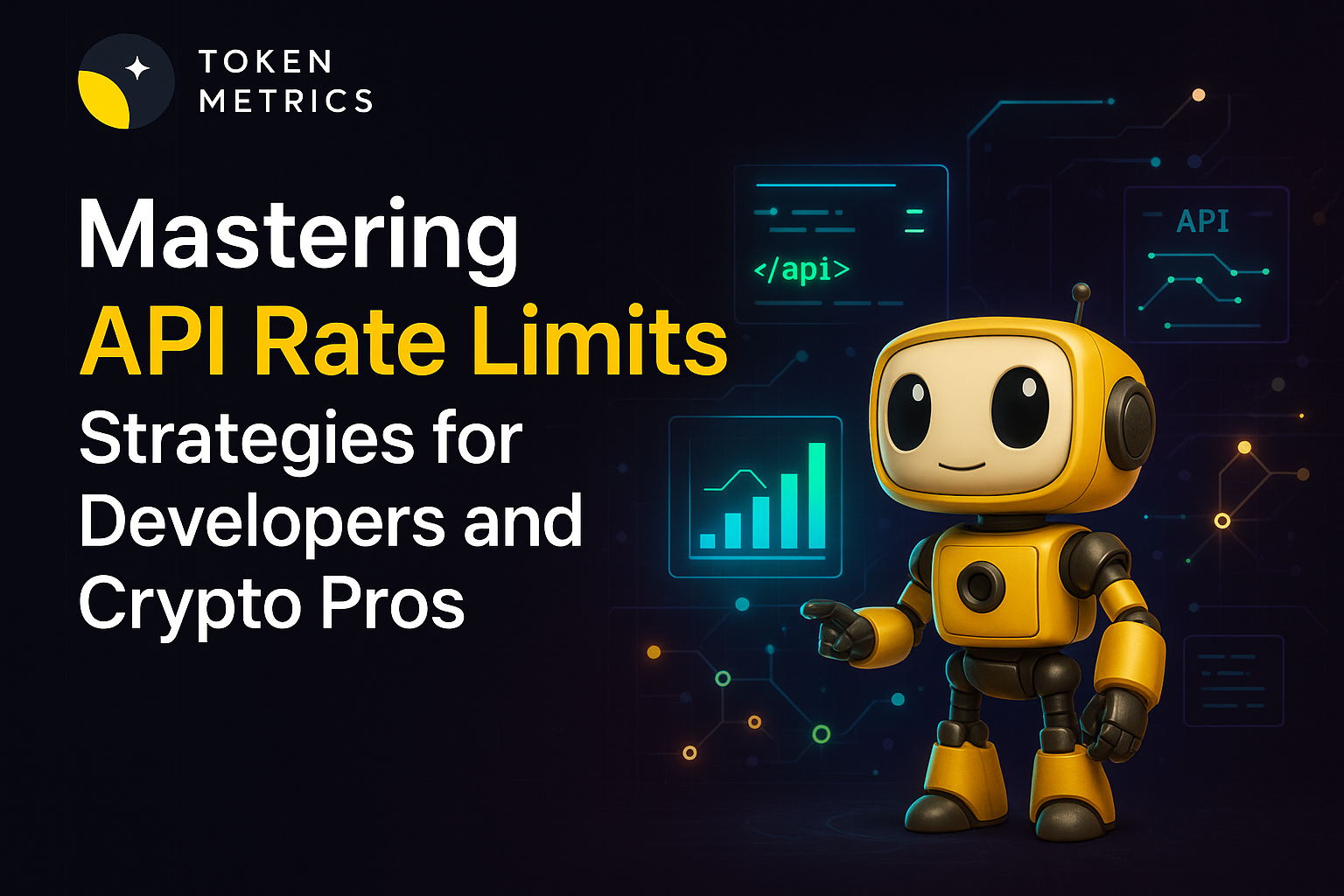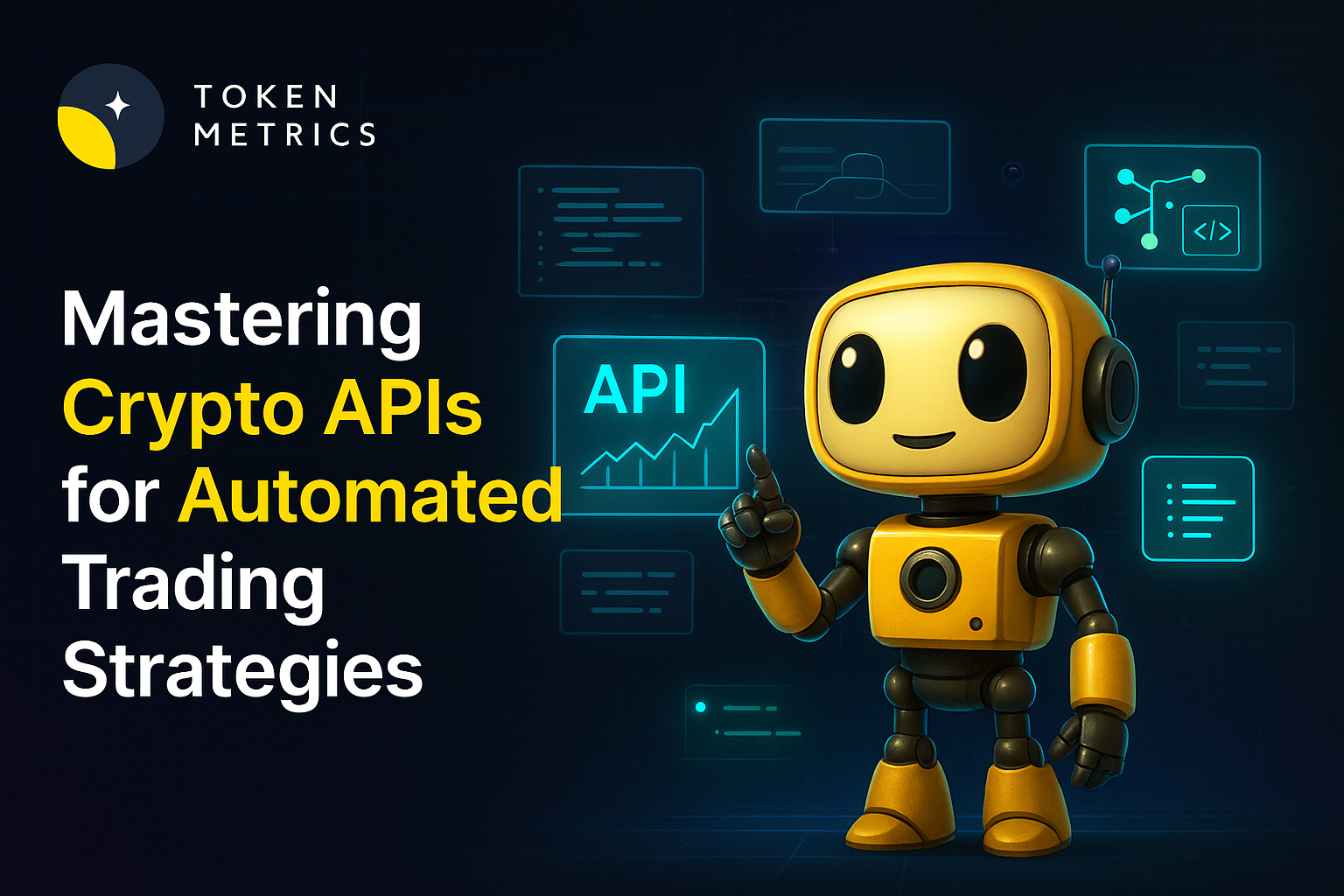Mastering API Rate Limits: Strategies for Developers and Crypto Pros

APIs power the data-driven revolution in crypto and beyond, but nothing derails innovation faster than hitting a rate limit at a critical moment. Whether you’re building trading bots, AI agents, portfolio dashboards, or research tools, understanding and managing API rate limits is essential for reliability and scalability.
What Are API Rate Limits?
Most API providers, especially in crypto, impose rate limits to protect their infrastructure and ensure fair resource usage among clients. A rate limit defines the maximum number of requests your app can make within a specific timeframe—say, 100 requests per minute or 10,000 per day. Exceeding these limits can result in errors, temporary bans, or even long-term blocks, making robust rate management not just a courtesy, but a necessity for uninterrupted access to data and services.
Why Do Crypto APIs Enforce Rate Limits?
The explosive growth of crypto markets and real-time analytics means data APIs face enormous loads. Providers implement rate limits for several key reasons:
- Stability: Throttling prevents spikes that could crash servers or degrade performance for all users.
- Fair Use: It ensures that no single client monopolizes resources, maintaining equal access for everyone.
- Security: Rate limits help detect and mitigate misuse, such as DDoS attacks or automated scraping.
This is especially critical in crypto, where milliseconds count and data volumes can be extreme. Services like trading execution, real-time quotes, and on-chain analytics all rely on consistent API performance.
Detecting and Interpreting Rate Limit Errors
When your app exceeds rate limits, the API usually responds with a specific HTTP status code, such as 429 Too Many Requests or 403 Forbidden. Along with the status, APIs often return structured error messages detailing the violation, including which limit was breached and when new requests will be allowed.
Common fields and headers to look for:
- X-RateLimit-Limit: the current quota
- X-RateLimit-Remaining: requests left in the window
- X-RateLimit-Reset: UNIX timestamp when quota resets
Proper error handling—such as parsing these headers and logging retry attempts—is the foundation for any robust API integration.
Best Practices for Handling API Rate Limits
Successfully managing API rate limits ensures both smooth user experiences and API provider goodwill. Here are essential best practices:
- Understand the Documentation: Review each API’s rate limit policy (per key, user, endpoint, IP, etc.), as these can vary significantly.
- Throttle Requests Client-Side: Build in logic to pace outbound traffic, using techniques like token bucket algorithms or leaky buckets to smooth bursty behavior.
- Implement Automated Backoff: If you hit a limit, respect the Retry-After or X-RateLimit-Reset values and back off request attempts accordingly.
- Aggregate Requests Smartly: Wherever possible, use batch endpoints or design your workflow to minimize redundant calls.
- Monitor Usage Analytics: Continuously track API consumption trends to anticipate bottlenecks or the need to request a higher quota.
- Graceful Error Handling: Use robust error handling to avoid cascading failures in your application in the event of limit breaches.
The combination of proactive client design and real-time monitoring is the best defense against hitting hard limits, whether you’re scaling a single app or orchestrating a fleet of decentralized AI agents.
Advanced Strategies for Developers and Quant Teams
As your infrastructure grows—handling multiple APIs, high-frequency trading signals, or deep analytics—you’ll need even more sophisticated approaches, such as:
- Centralized Rate Limiters: Use middleware or reverse proxies (such as Redis-based limiters) to coordinate requests across servers and services.
- Distributed Queuing: Implement job queues (RabbitMQ, Kafka, etc.) to control throughput at scale, balancing real-time needs against quota constraints.
- Adaptive Algorithms: Employ dynamic algorithms that adjust polling rates based on remaining quota, market volatility, or business urgency.
- API Key Rotation: For enterprise cases (where allowed), rotating across authorized keys can help balance traffic and stay within limits.
- Rate Limit Forecasting: Use analytics and AI modeling to predict traffic bursts and optimize usage proactively—tools like Token Metrics can help analyze trends and automate parts of this process.
Planning for scalability, reliability, and compliance with provider guidelines ensures you remain agile as your crypto project or trading operation matures.
Build Smarter Crypto Apps & AI Agents with Token Metrics
Token Metrics provides real-time prices, trading signals, and on-chain insights all from one powerful API. Grab a Free API Key
FAQ: What Happens If I Exceed an API Rate Limit?
Exceeding rate limits typically results in HTTP 429 errors and temporary suspension of requests. Many APIs automatically block requests until your quota resets, so continual violation may lead to longer blocks or even account suspension. Always refer to your provider’s documentation for specifics.
FAQ: How Can I Check My Current API Usage?
Most APIs include custom headers in responses detailing your remaining quota, usage window, and reset times. Some services offer dashboards to monitor usage statistics and set up alerts for approaching quota boundaries.
FAQ: Can I Request a Higher API Rate Limit?
Many API providers, especially paid plans or partners, allow you to request increased quotas. This process often involves contacting support, outlining your use case, and justifying why higher limits are needed.
FAQ: Which Crypto APIs Have Generous Rate Limits?
Rate limits vary widely by provider. Well-established platforms like Token Metrics, Binance, and CoinGecko balance fair access with high-performance quotas—always compare tiers and read docs to see which fits your scale and usage needs.
FAQ: How Does Rate Limiting Affect AI and ML Applications?
For AI/ML models reliant on real-time data (e.g., trading bots, sentiment analysis), rate limiting shapes data availability and latency. Careful scheduling, data caching, and quota awareness are key to model reliability in production environments.
Disclaimer
This content is for educational and informational purposes only. It does not constitute investment, legal, or financial advice of any kind. Crypto services and APIs are subject to provider terms and legal compliance requirements. Readers should independently verify policies and consult professionals as necessary before integrating APIs or automated solutions.
Create Your Free Token Metrics Account

.png)




%201.svg)
%201.svg)


%201.svg)










.svg)




.png)